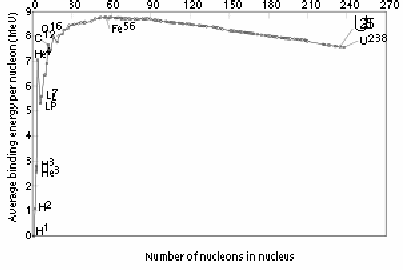Would more energy or less energy be released? Can I get some help with this question please? Thanks!

1 Answer
This is an interesting question, and I’ve considered several responses before settling on this.
Explanation:
The total amount of energy available is constant as it is determined by the difference in mass of the reactants and products. This is tiny, but because mass contains so much energy per kilogram, (
To understand this, you need to appreciate that larger nuclei are much more stable, but only up to a point (mass

Clearly, three fragments would have lower individual mass, but consequently higher velocity to maintain a roughly constant kinetic energy when compared with the two fragment scenarios.
The energy carried away as the kinetic energy of the neutrons and gamma rays would also be expected to be constant. This website is pretty good, particularly on the development of the technology: https://www.britannica.com/science/nuclear-fission#ref48314
In summary, the energy remains constant because it is determined by a change in total mass.

